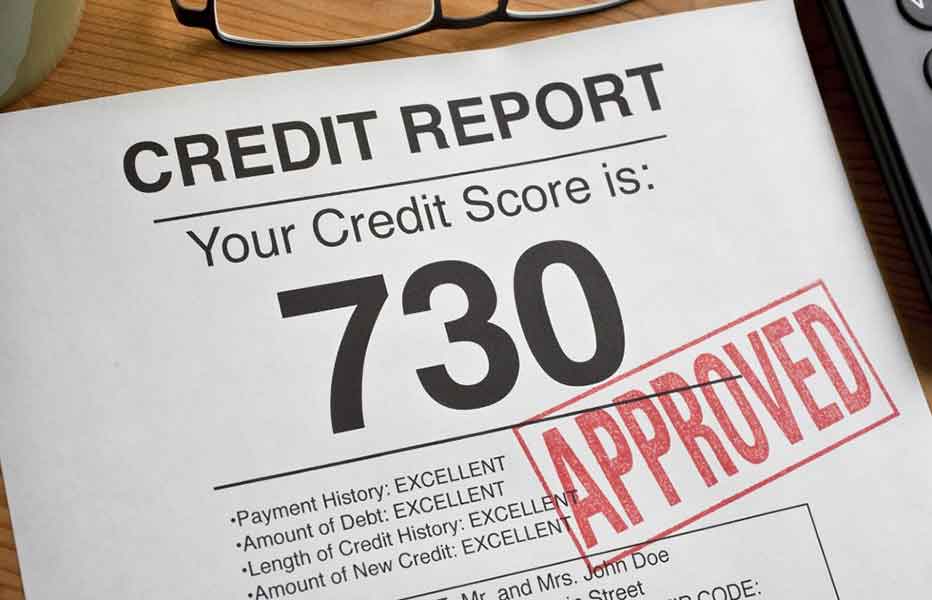A single error on your credit report can drop your score by 100 points—or more. That could cost you thousands in higher interest rates, make it harder to qualify for a mortgage, or even prevent you from getting an apartment.

Credit reports play a major role in your financial life, but they’re often filled with mistakes, outdated accounts, or negative items that can be fixed. Cleaning up your credit report isn’t just about improving your score—it’s about saving money, reducing stress, and opening the door to better financial opportunities.
If you’re dealing with bad credit or just want to make sure everything on your report is accurate, here’s how to take action
How to Clean Up Your Credit Report
Listed below are the critical steps you can take to clean up your credit report to improve your credit scores over time. We’ll also share some extra tips on general credit maintenance.
This is what the process looks like in a nutshell:
- Check your credit report.
- Dispute credit report errors.
- Lower your credit utilization.
- Pay off debts.
Ready to Clean Up Your Credit Report?
Learn how credit repair professionals can assist you in disputing inaccuracies on your credit report.

1. Check Your Credit Report
The first step in cleaning up your credit is knowing what’s actually on your report. You’re entitled to a free credit report from each of the three major credit bureaus—Equifax, Experian, and TransUnion—once a year at AnnualCreditReport.com, the only federally authorized source for free reports.
When you get your reports, go through each one carefully. Even small mistakes can hurt your credit score or flag you as a higher risk to lenders.
Here’s what to check for:
- Incorrect personal details – Make sure your name, Social Security number, and address are all accurate.
- Accounts that don’t belong to you – These could be signs of identity theft or reporting errors.
- Outdated or duplicate entries – Negative items like late payments or collections should drop off after seven years.
- Incorrect balances or credit limits – These affect your credit utilization ratio.
- Unauthorized hard inquiries – If a lender pulled your credit without your permission, that could be a red flag.
Remember, your credit report does not include your credit score. To see your actual score, you’ll need to use a separate service or check with your credit card issuer or bank—many of them provide scores for free.
2. Dispute Errors on Your Credit Report
Mistakes on your credit report aren’t just frustrating—they can cost you. If you find inaccurate information, disputing it is one of the fastest ways to improve your credit score.
How to File a Dispute
You can file a dispute online, but mailing a physical letter by certified mail gives you a better paper trail. Send your dispute to the credit bureau that’s reporting the error—Equifax, Experian, or TransUnion.
Include the following in your dispute:
- A short explanation of what’s wrong and why
- A copy of your credit report with the error highlighted
- Any documentation that supports your claim (optional but helpful)
What Happens After You File
Once the credit bureau receives your dispute, they’re required to investigate within 30 days. They’ll contact the creditor, review the evidence, and remove the item if it can’t be verified.
If your dispute is successful, the bureau should notify the other two credit bureaus. But it’s a good idea to send them the updated information yourself to make sure everything stays consistent.
What to Do If a Dispute Fails
If your dispute is denied, you have a few backup options:
- Add a consumer statement to your report (up to 100 words)
- Submit a complaint with the CFPB
- Wait for the item to age off your report (typically after 7 years)
Dispute Strategically
If you have several errors, don’t dispute them all at once. Focus on the most damaging items first, like collections or charge-offs. Handling a few at a time keeps the process manageable and reduces the chance of your disputes being ignored or marked as frivolous.
3. Lower Your Credit Utilization
Your credit utilization ratio is the percentage of credit you’re using compared to your total available limit. It’s one of the biggest factors in your credit score. Ideally, you want this number under 30%.
To calculate your ratio, divide your total credit card balances by your total credit limits. For example, if you have $6,000 in available credit, and you’ve used $2,000, your ratio is 33%—too high.
Here’s how to bring it down:
- Pay down high balances – Focus on credit cards with the highest utilization first.
- Request a credit limit increase – This can instantly improve your ratio, but only if you don’t charge more afterward.
- Spread out your balances – If one card is maxed out and others are nearly empty, shifting some debt can help even out your ratios.
Even small balance reductions can make a noticeable difference in your score.
4. Pay Off Debts
Tackling your debt doesn’t just help your credit—it also saves you money on interest. Here are a few common strategies to consider:
Balance Transfer Cards
Move high-interest credit card debt to a new card with a 0% intro APR. This gives you a window to pay down your balance without extra interest piling on. Just watch out for transfer fees and make sure you pay it off before the promo period ends.
Debt Consolidation Loans
A debt consolidation loan with a lower interest rate can simplify your payments and help you save over time. This is especially useful if your credit has improved since you took on your original debt.
Trim Your Budget
Go through your expenses and look for anything you can cut or pause—subscriptions, dining out, unused services. Every dollar you save can go toward paying off debt faster.
How to Remove Negative Items From Your Credit Report
Some of the most damaging items on your credit report are charge-offs, collections, and late payments. These don’t have to stay on your report forever—and in some cases, you can get them removed sooner.
Charge-Offs
A charge-off means a creditor has written off your debt as unpaid, but you still owe it. It hurts your credit more than a late payment.
Here’s what to do:
- Contact the creditor and ask to settle the account. Get the agreement in writing before you pay.
- After payment, file a dispute with the credit bureau and include your proof.
- If the account can’t be verified or wasn’t updated after payment, the bureau may remove it.
Collection Accounts
Collections can stay on your credit report for up to seven years, but that doesn’t mean you can’t take action.
Steps to take:
- If the account is old, check the date. If it’s past the seven-year reporting limit, dispute it.
- Request validation within 30 days of the collector contacting you. They must prove the debt is accurate and that they have the right to collect it.
- If the debt was resold multiple times, there’s a good chance the collector won’t have complete documentation. Dispute anything inaccurate.
Late Payments
Late payments can hurt your score even if the rest of your report is clean.
How to handle them:
- Start with the most overdue accounts—90 days or more past due do the most damage.
- If the payment was reported incorrectly, dispute it with both the creditor and the credit bureaus.
- If the account is otherwise in good standing, ask for a goodwill adjustment. Some creditors will remove the late mark if you’ve been a reliable customer.
Ready to Clean Up Your Credit Report?
Learn how credit repair professionals can assist you in disputing inaccuracies on your credit report.

Consider Professional Help
If the dispute process feels overwhelming, or you’re dealing with multiple complex issues, hiring a credit repair company may be worth considering. They can help organize disputes, identify patterns in reporting errors, and stay on top of deadlines.
Credit repair professionals are also familiar with consumer protection laws like the Fair Credit Reporting Act and Fair Debt Collection Practices Act—so they know how to escalate issues when a creditor or bureau doesn’t respond properly.
If you decide to go this route, look for a reputable company with transparent pricing and no upfront fees. Sky Blue Credit Repair is one option known for its customer support and flat-rate pricing.
How Your Credit Score is Calculated
Understanding how your credit scores are calculated is the first step to cleaning up your credit history and improving it. Creditors use different credit scoring models, but most of them use FICO, which is based on several factors.
Creditors report your financial information to the three major credit bureaus, Equifax, Experian, and TransUnion. However, each credit bureau has its own relationship with creditors, so your credit score may vary among them.
Credit Utilization
Credit utilization is the amount of available credit that you actually use. This is presented as a percentage, and the lower your credit utilization is, the better your credit will be.
According to FICO, your utilization accounts for 30% of your credit score. With VantageScore 3.0, it accounts for 20%.
Payment History
Another major factor in your credit score is your payment history. This illustrates to creditors how consistent you’ve been with making payments, bills and other financial obligations on time. FICO considers payment history to account for 35% of your score. For VantageScore your payment history counts for 40% of its scoring model.
Length of Credit History
The longer your credit history is, the better. This is why it’s typically not a good idea to close a longstanding account, even if it is unused. Those with thin credit history can benefit from credit building cards and services.
Mix of Credit Types
The types of credit you have will also factor in to your overall credit score. Lenders prefer to see that a consumer can manage several types of debt. This is why having a mix of credit accounts, such as a mortgage, loan or credit card, can raise your FICO score.
Recent Applications
Every time you apply for a new source of credit, a hard inquiry is made on your credit reports. This often takes a few points off your credit score, but this can be built up again within a few months of good credit use.
Other Ways To Rebuild Your Credit
Once you’ve cleaned up errors and tackled your debt, there are still steps you can take to rebuild your credit over time. These strategies help show lenders that you’re managing credit responsibly—and they can speed up your progress.
- Become an authorized user – Ask a trusted family member or partner to add you to one of their credit cards. As long as the account has a solid payment history and low balance, it can help boost your score without requiring a credit check.
- Get a secured credit card – Secured credit cards require a deposit, but they report to the credit bureaus just like regular cards. Chime’s secured credit card is a popular option with no annual fee and no interest, as long as you pay on time.
- Ask for a credit limit increase – A higher credit limit can lower your credit utilization ratio, which helps your score. Just make sure you don’t charge more as a result. If your income has increased or your payment history has improved, you’re more likely to be approved.
- Use credit builder loans – Credit builder loans are designed to help build credit from scratch. The money is held in a locked account while you make monthly payments. Once you’ve paid it off, the funds are released to you—and your on-time payments are reported to the credit bureaus.
- Keep older accounts open – Even if you don’t use them, old accounts contribute to the length of your credit history. Don’t close your oldest cards unless they come with high fees or other drawbacks.
Final Thoughts
Cleaning up your credit isn’t complicated—but it does take consistency. It’s not about overnight fixes. It’s about building better habits, staying organized, and taking control of the information that lenders use to judge you.
If you check your reports regularly, fix errors as they come up, and keep your balances low, your score will improve over time. That improvement can lead to lower interest rates, better loan approvals, and more options when you need them most.
The steps you take today can open the door to stronger credit and more financial freedom down the road. And the earlier you start, the faster you’ll get there.


Leave a Reply